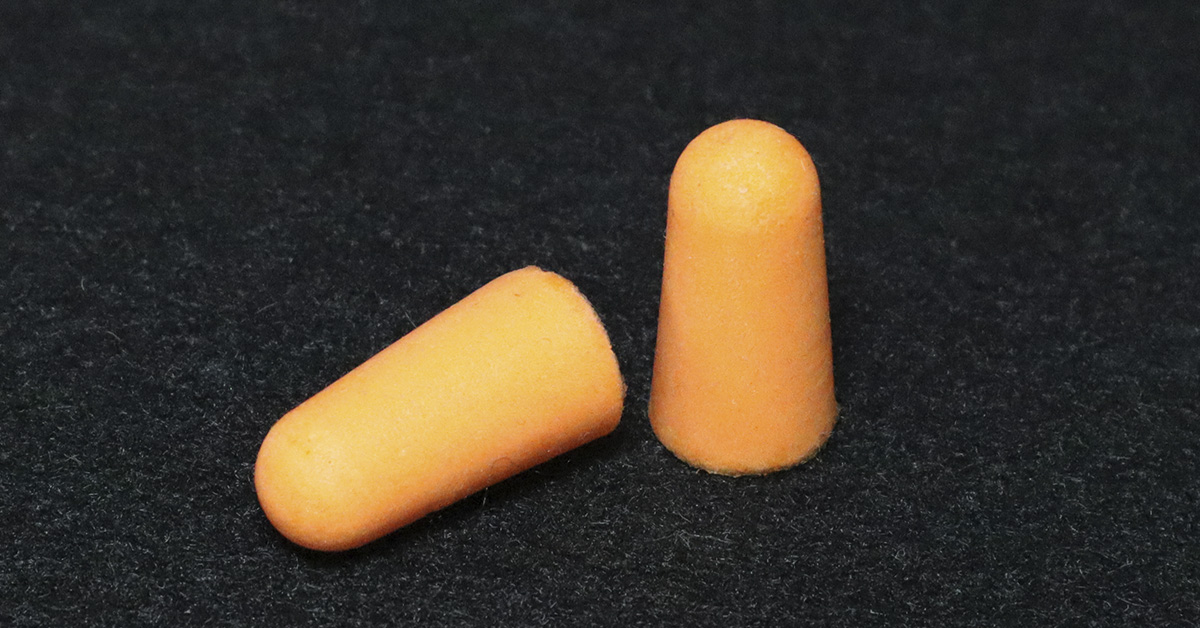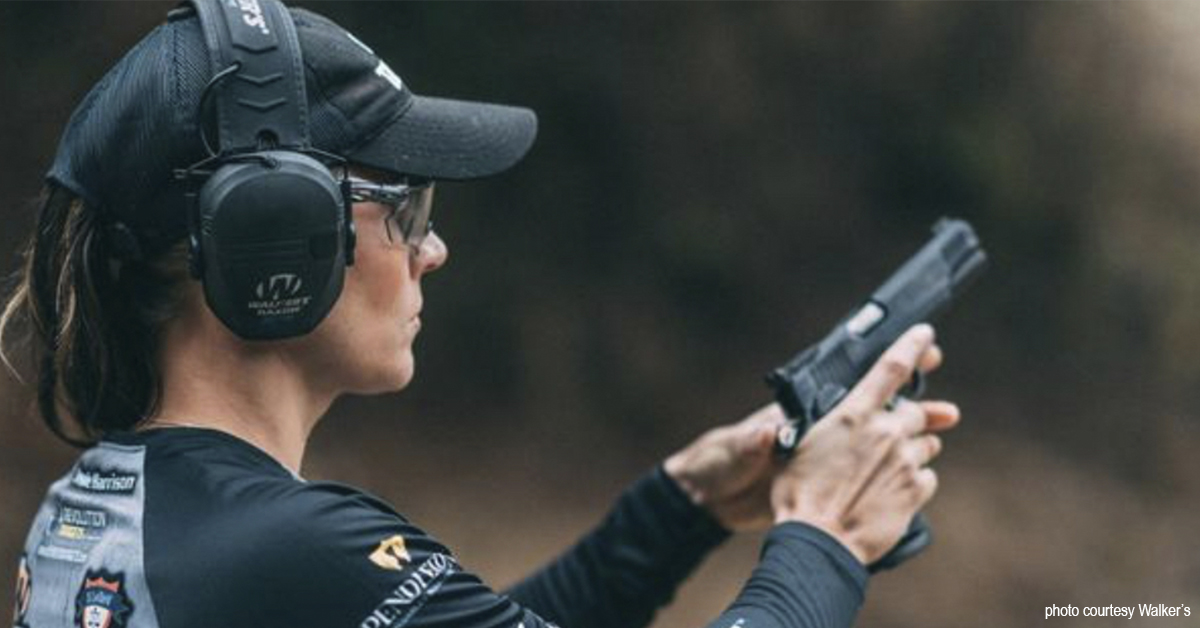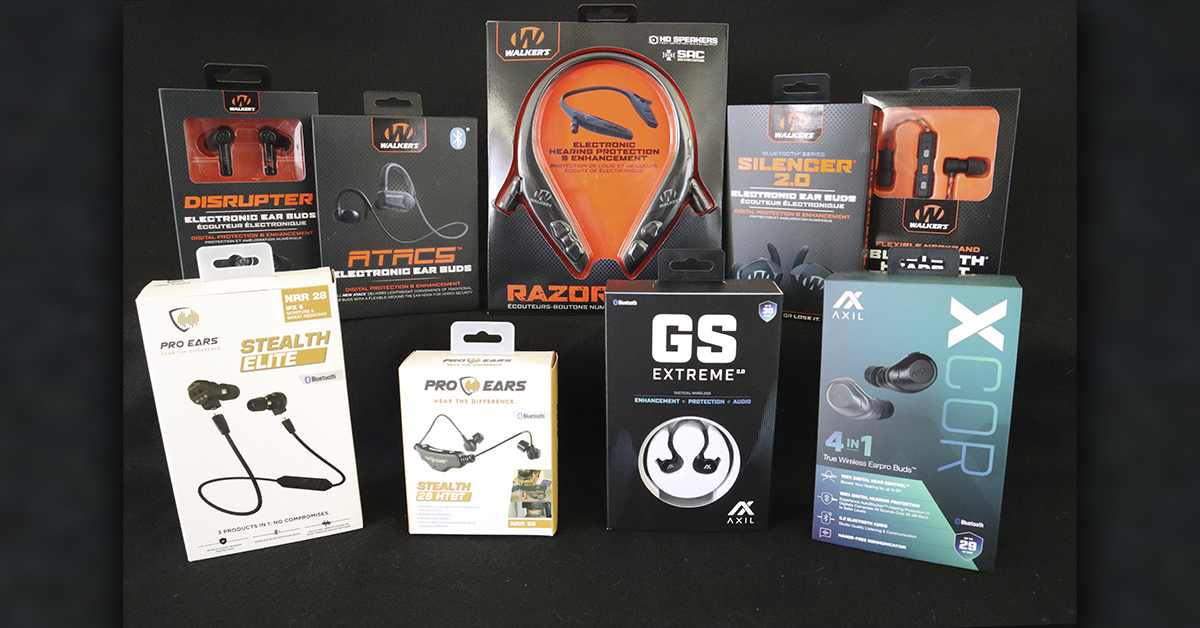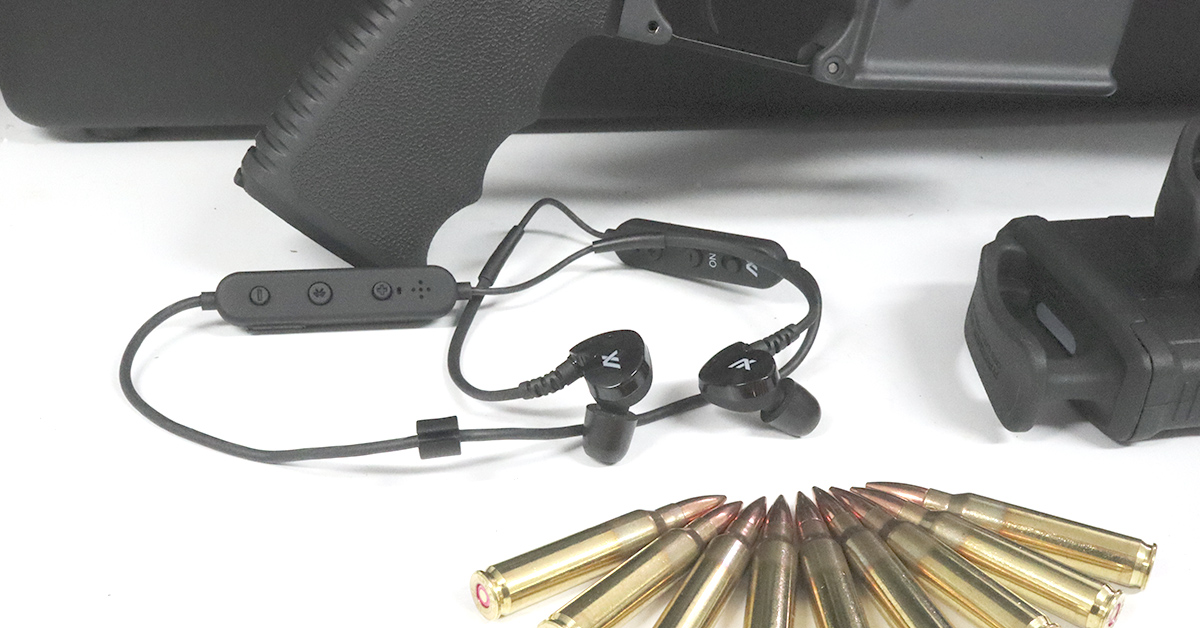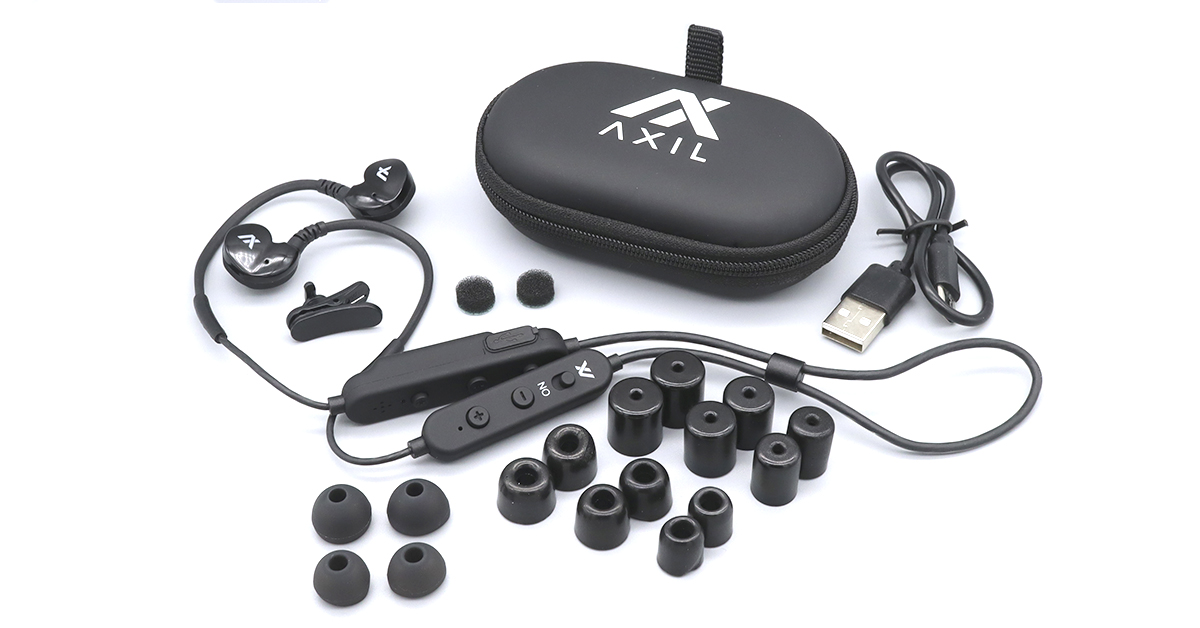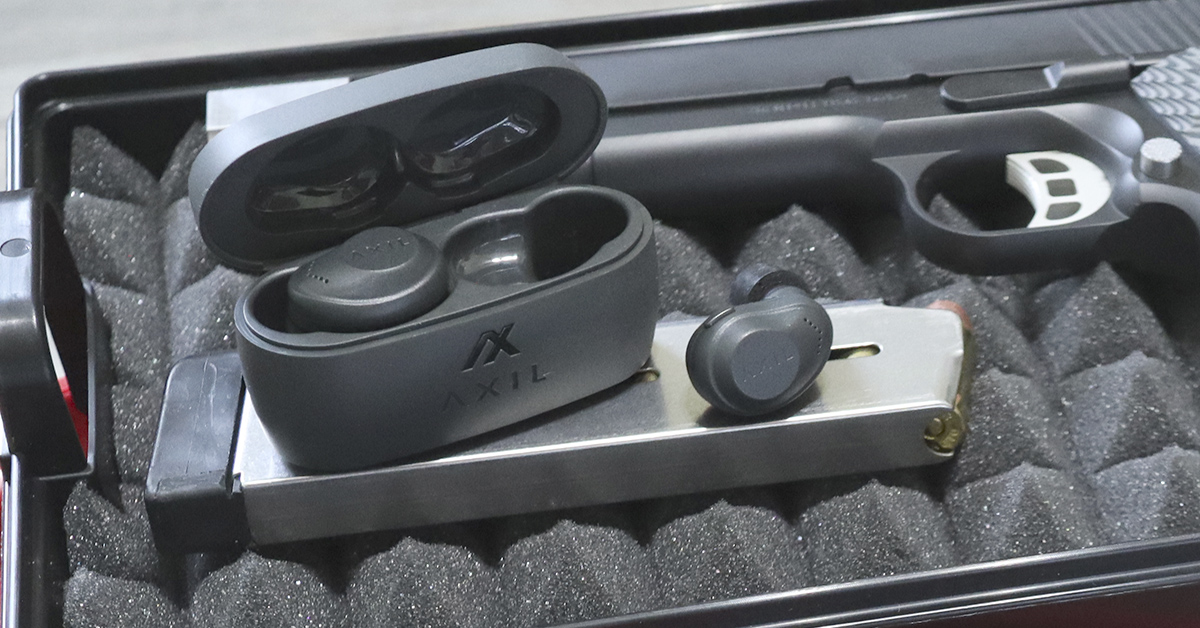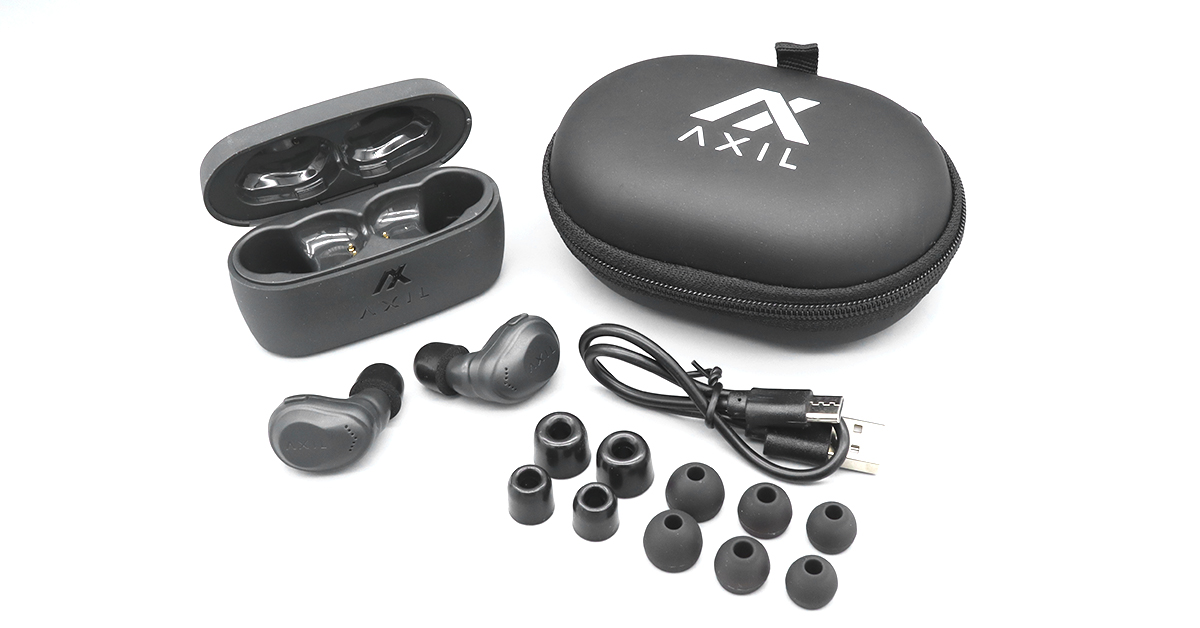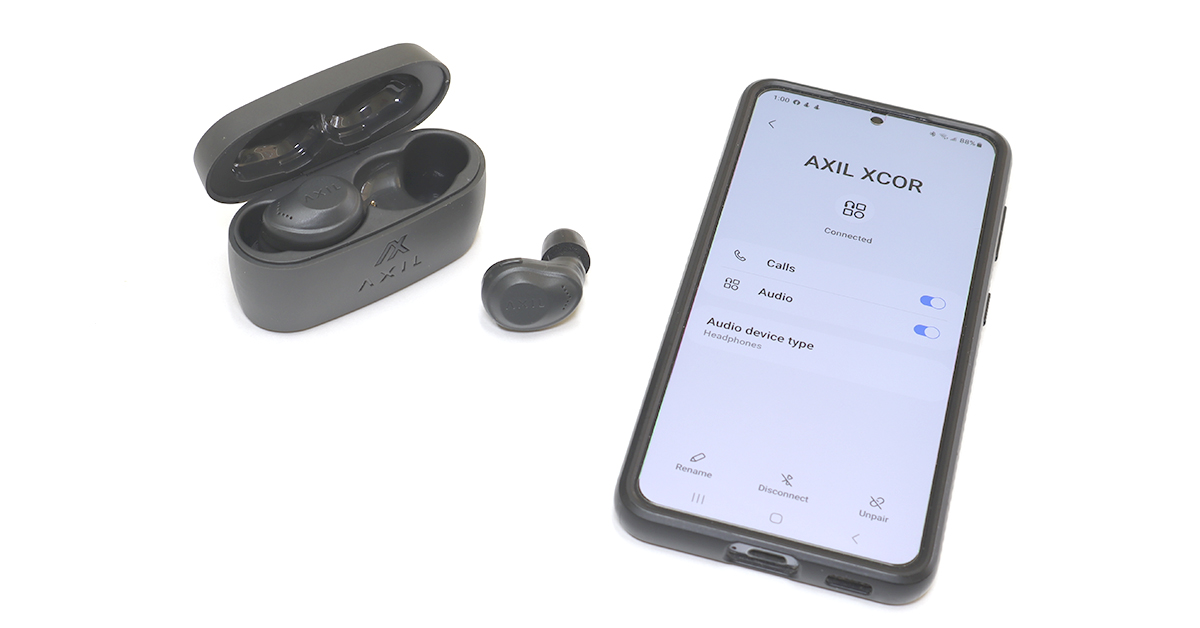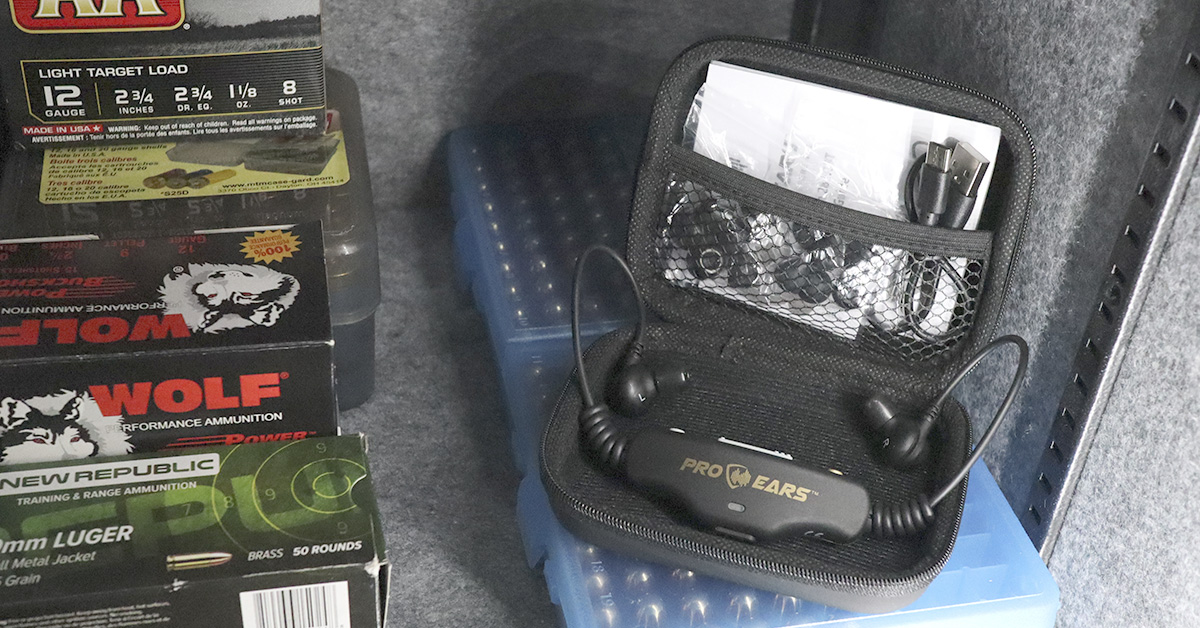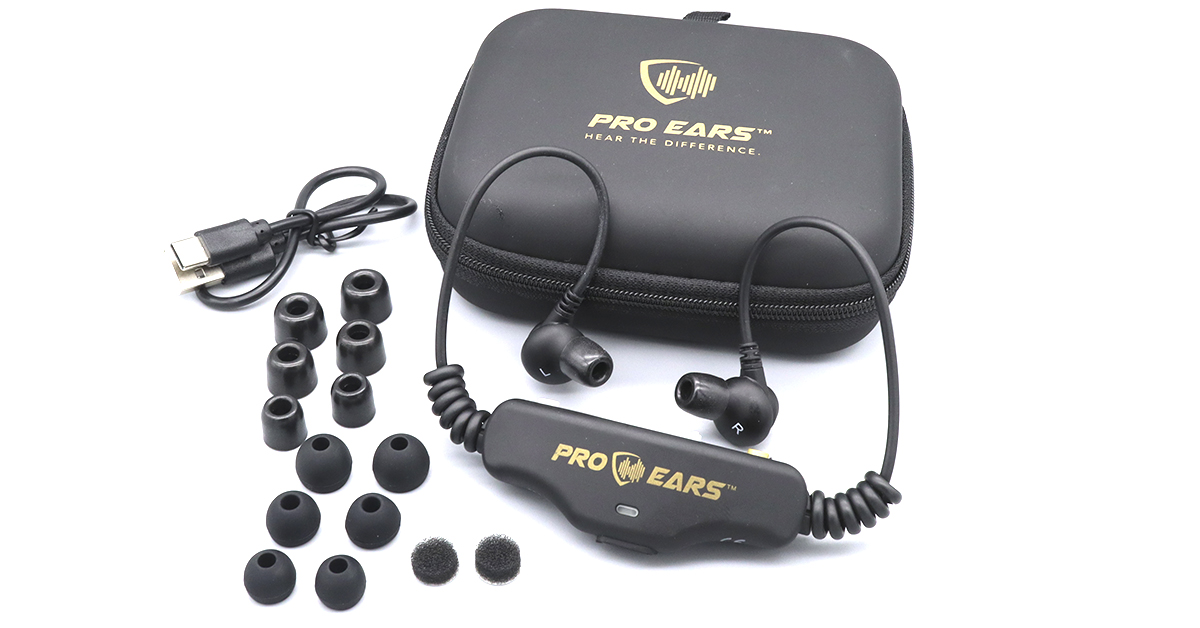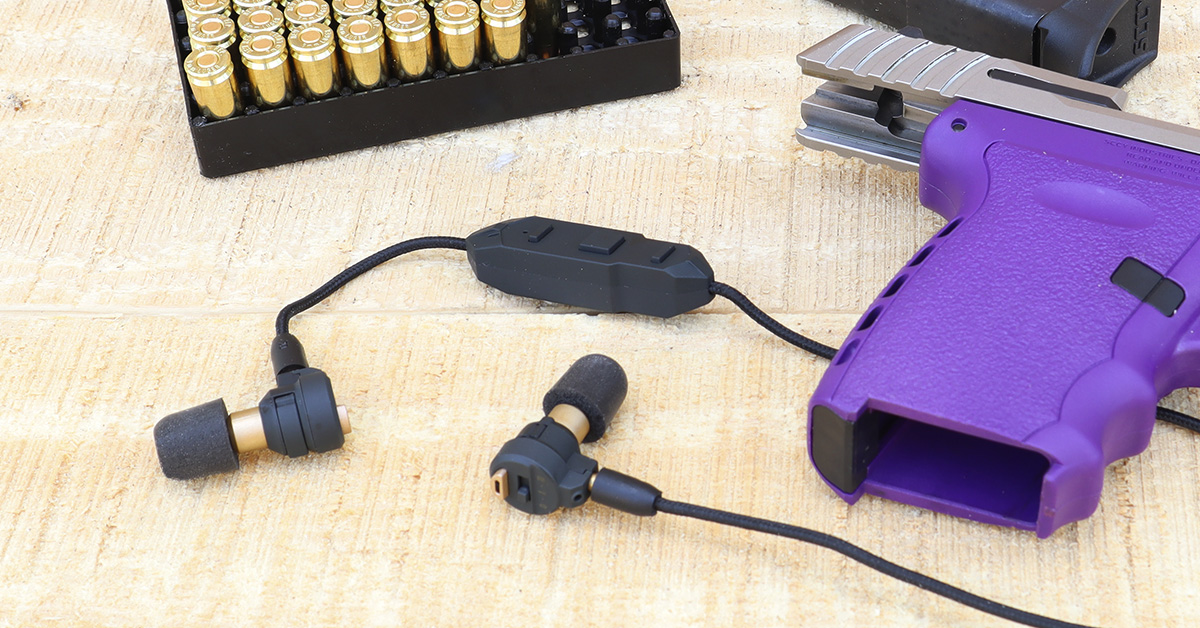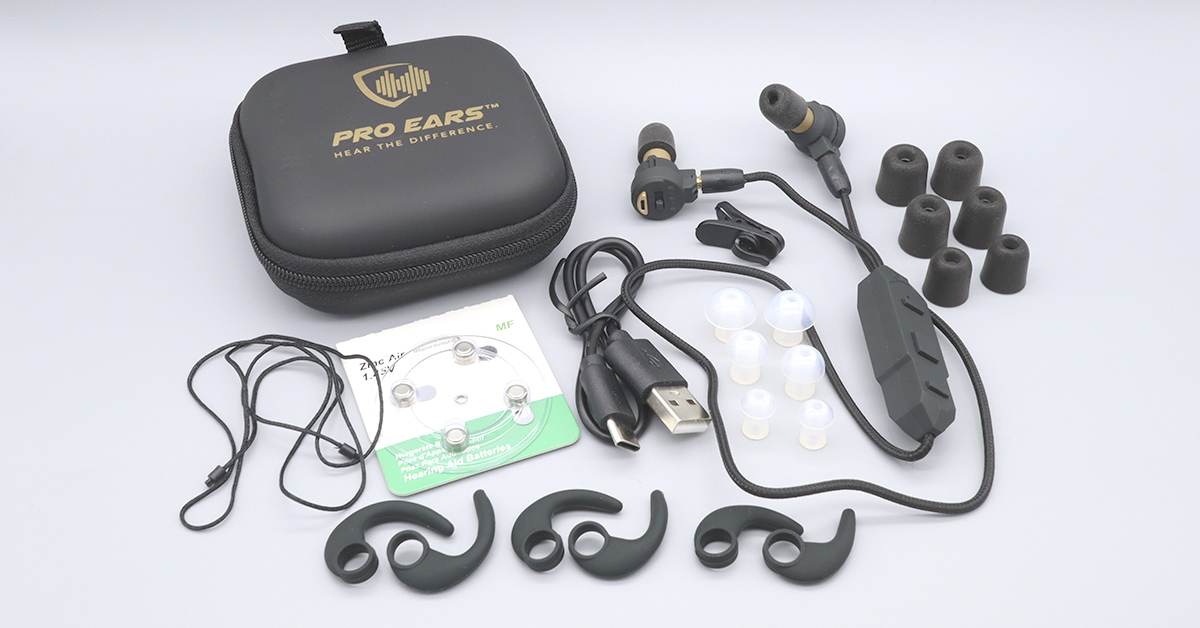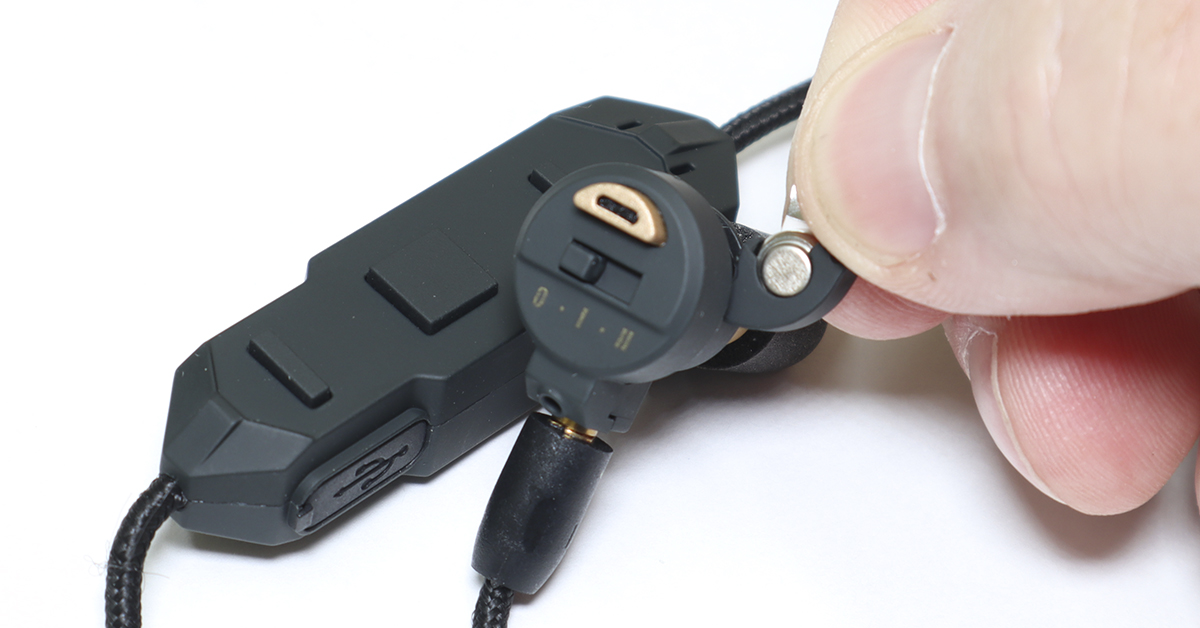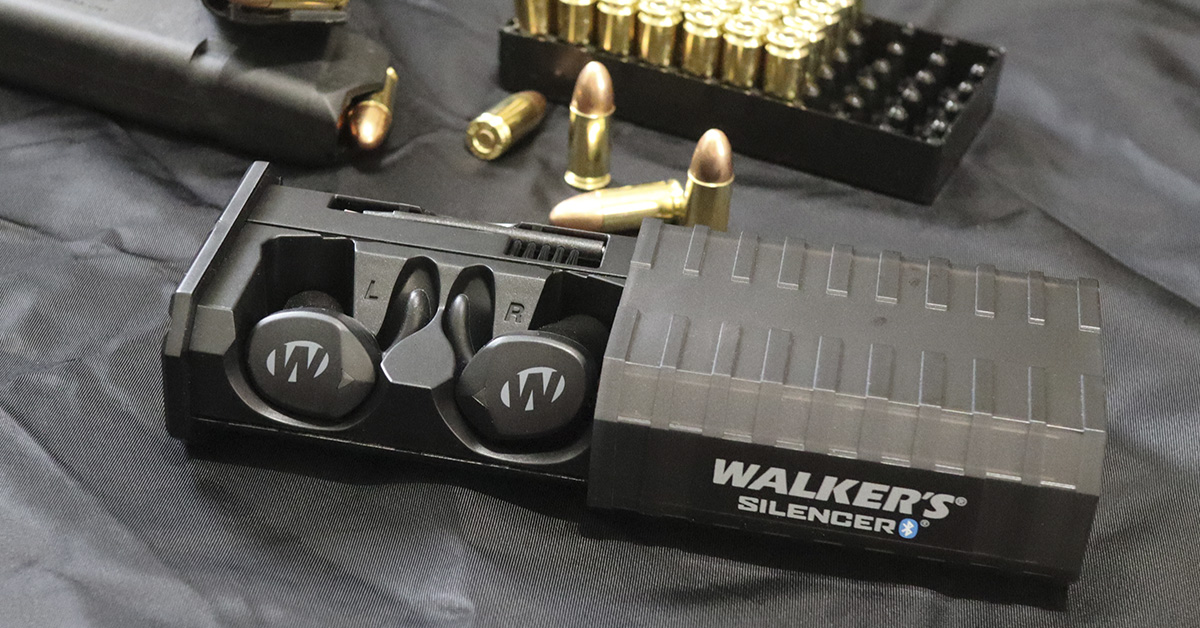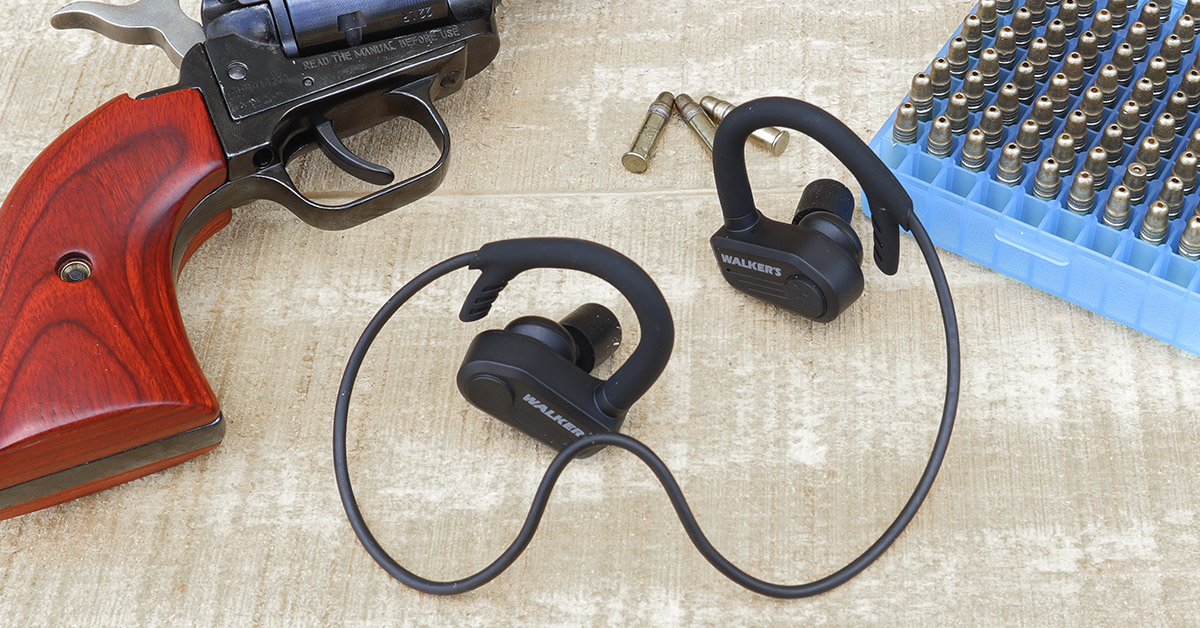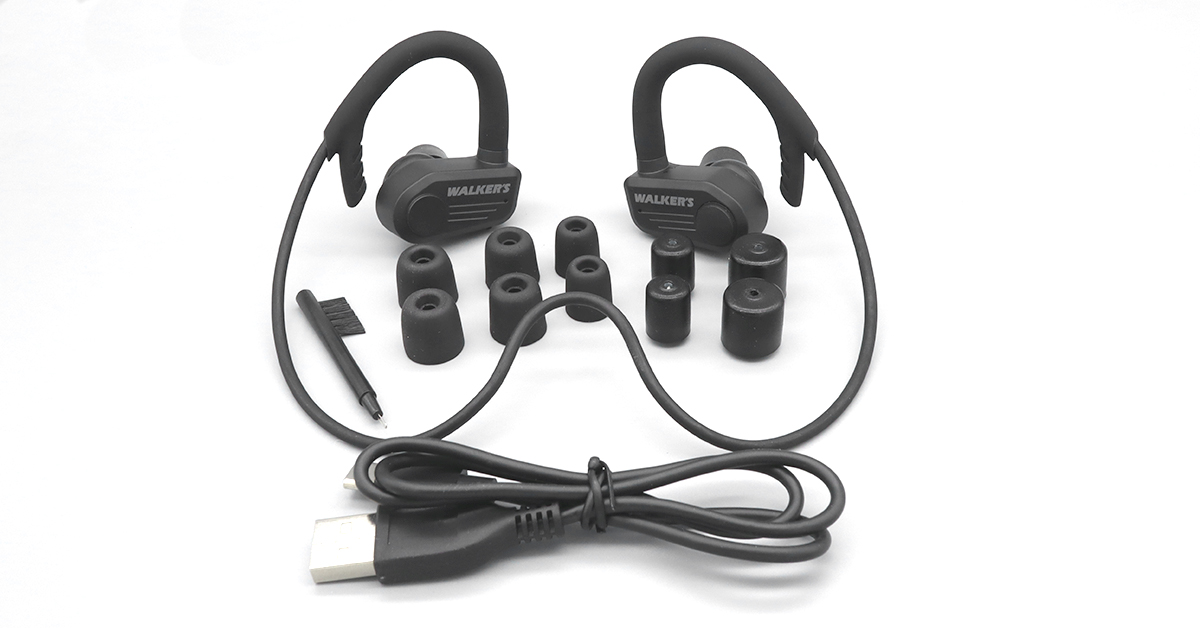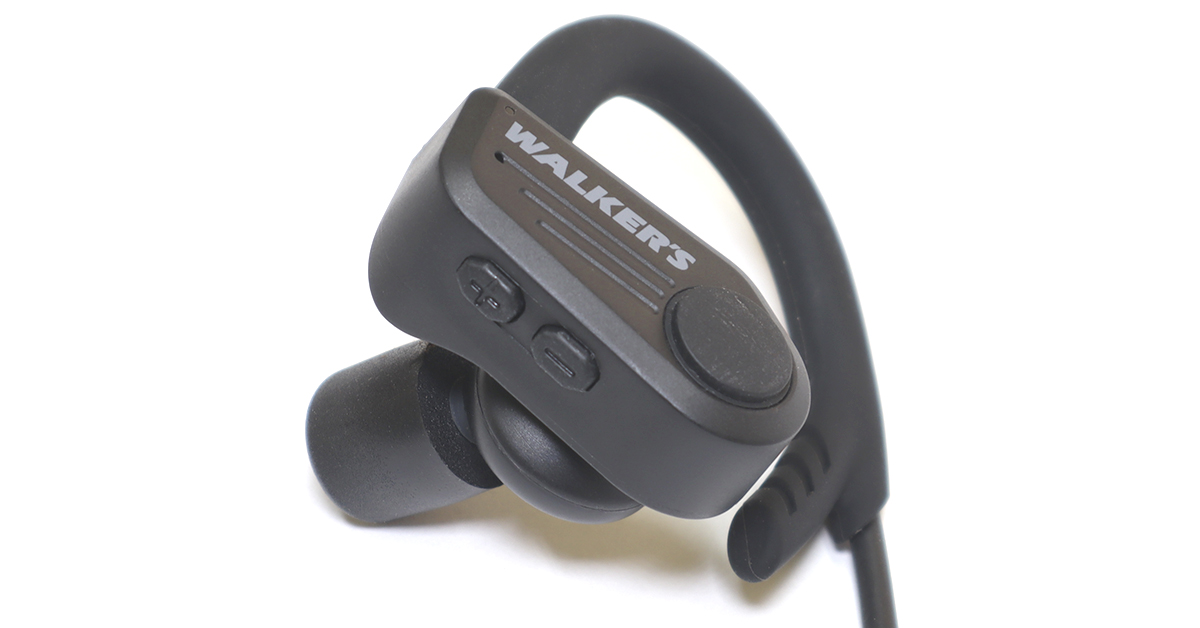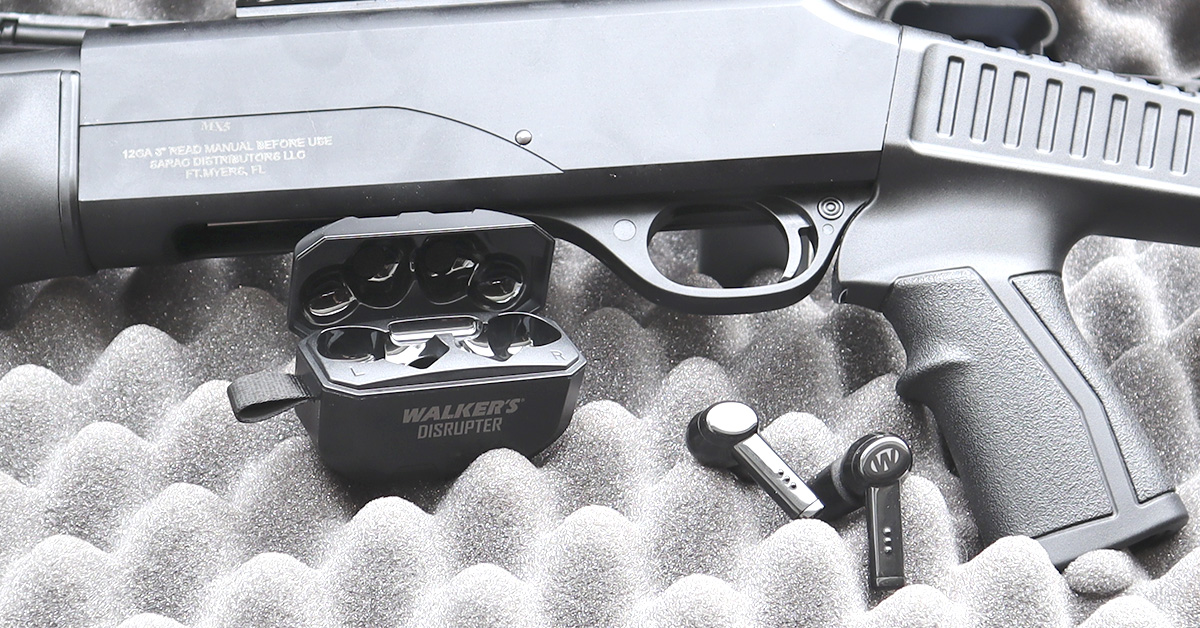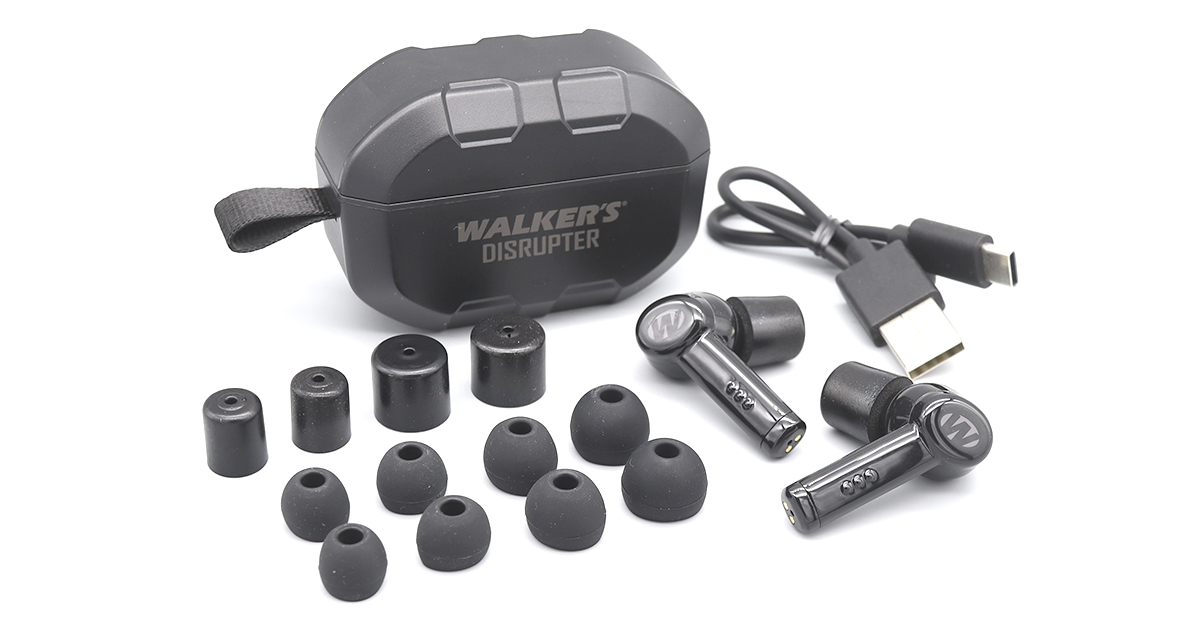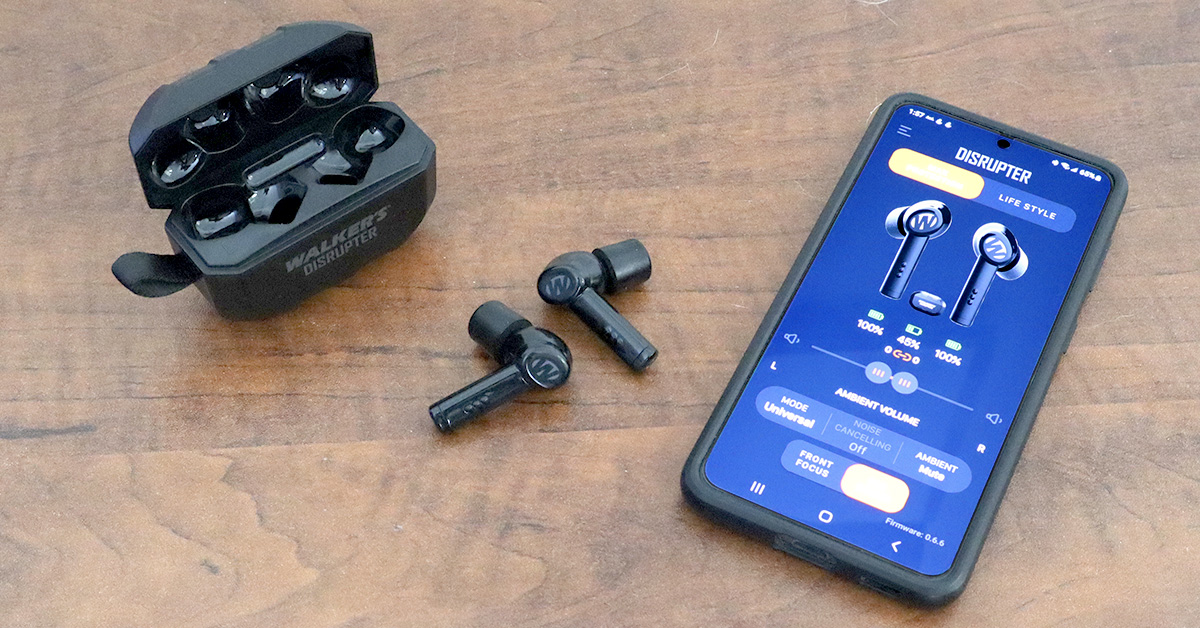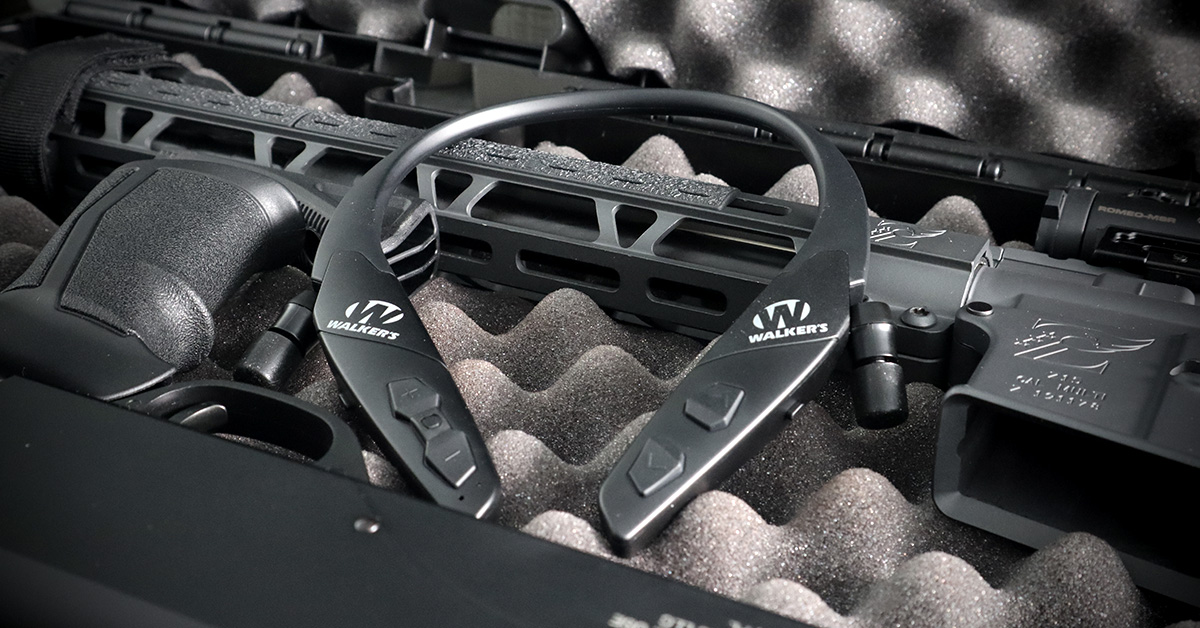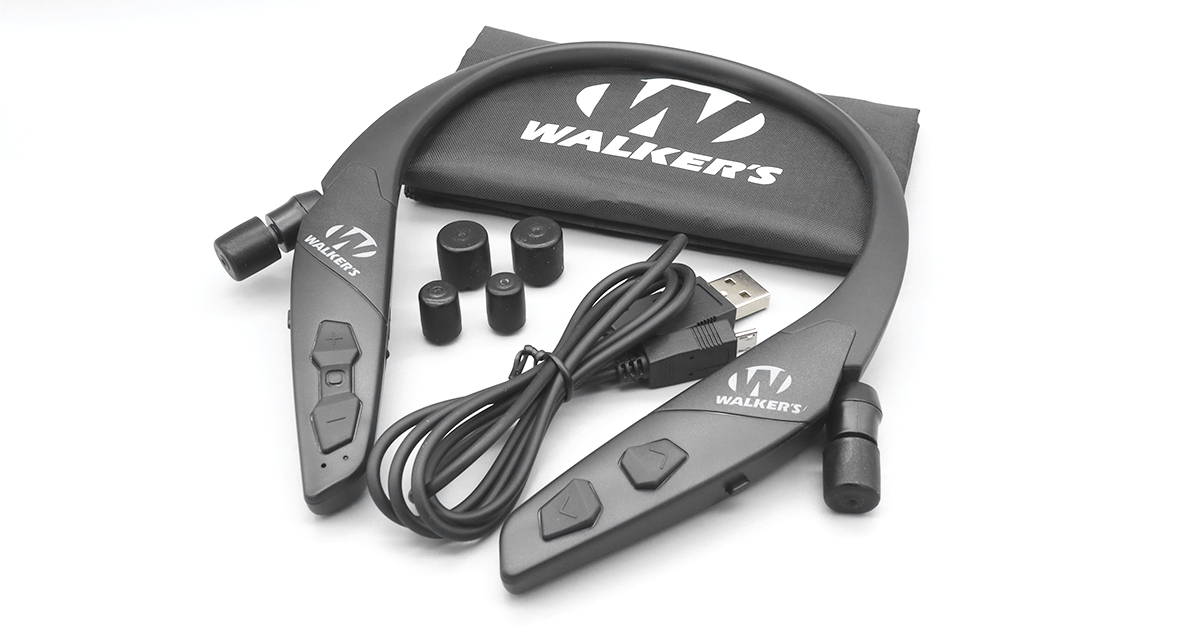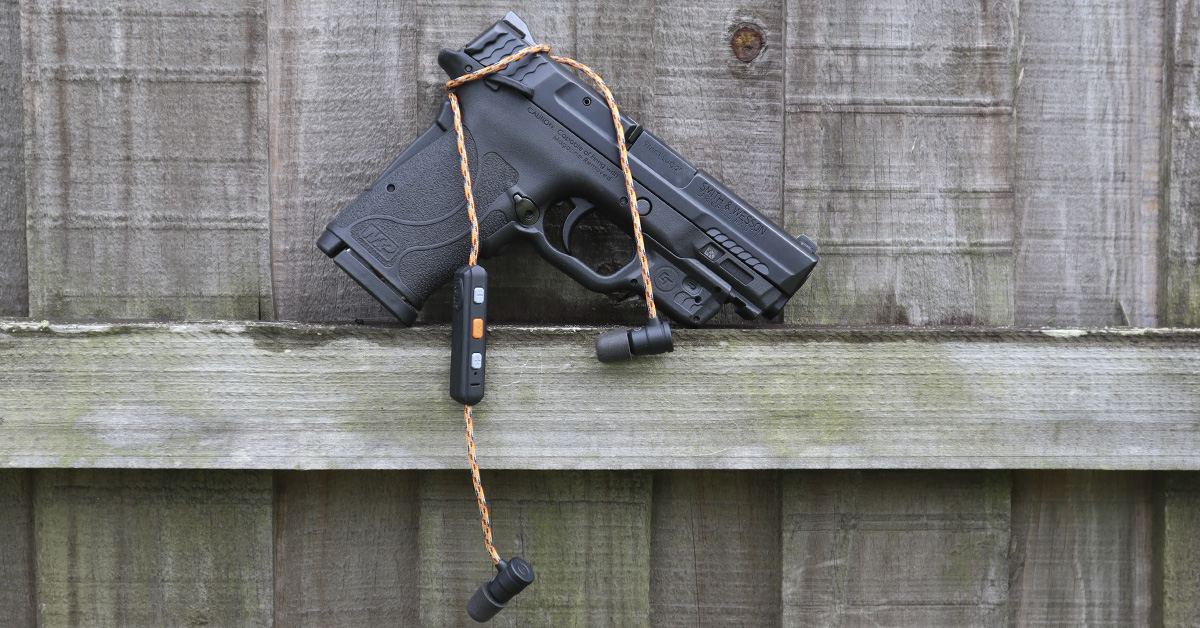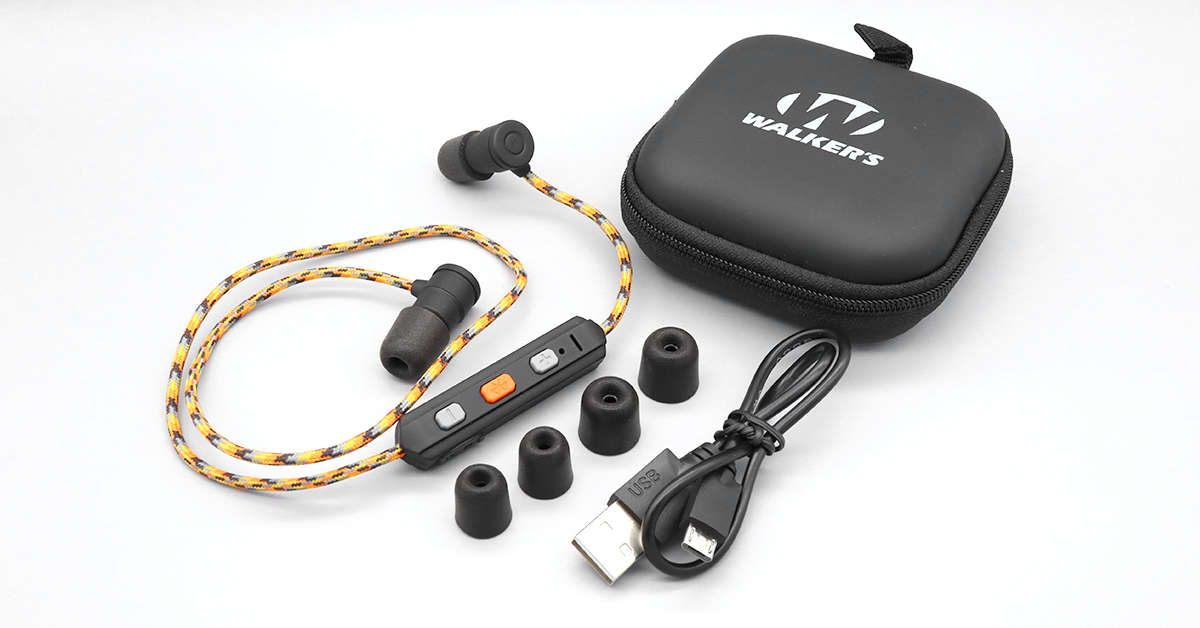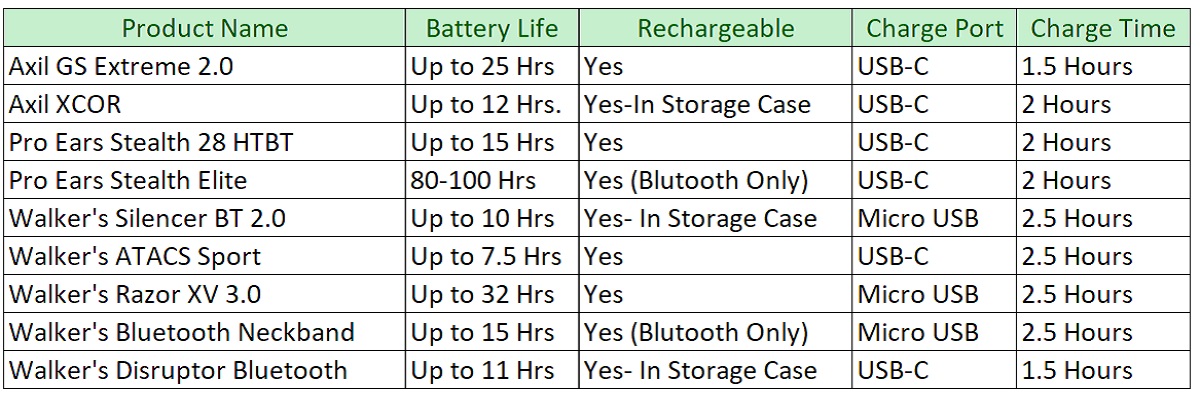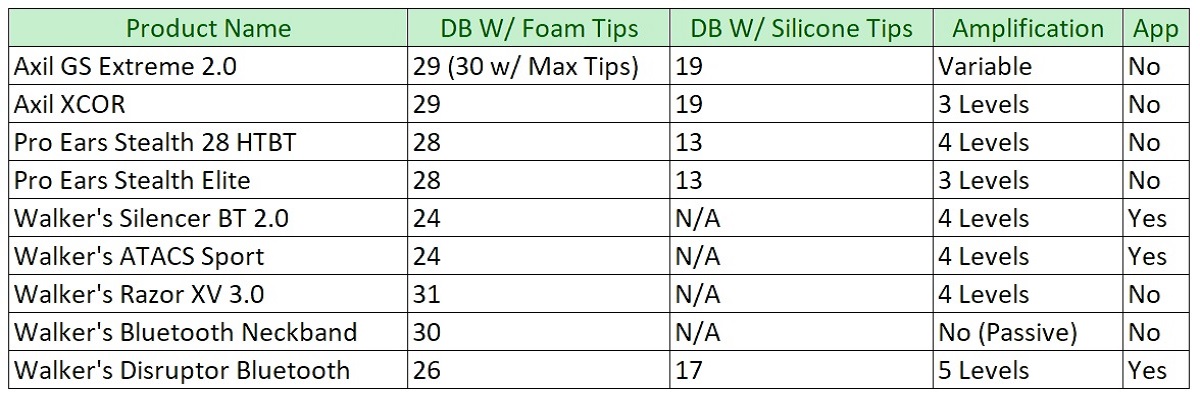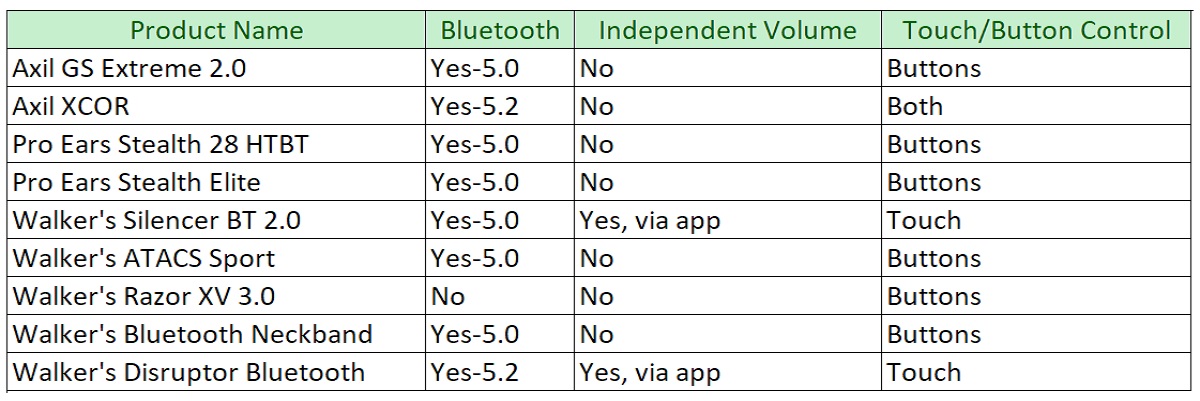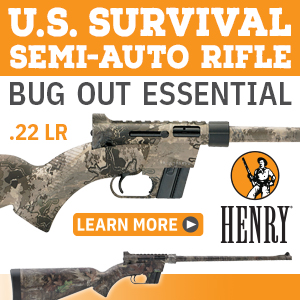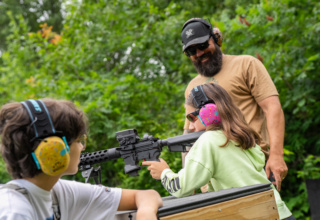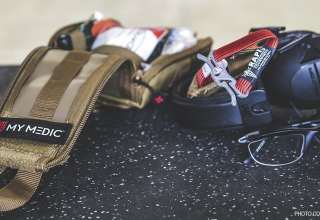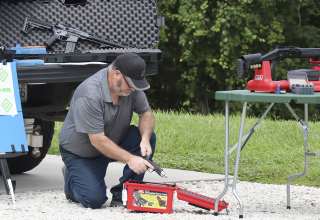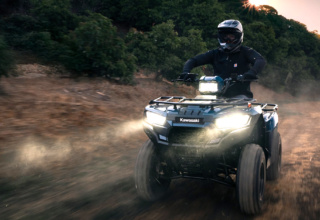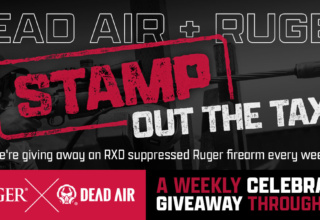Ready to step up from basic foam plugs or over-the-ear “cans” to modern in-ear electronic hearing protection? Here are our top ear pro picks you need to check out.
by Mark Houlahan
Most firearm enthusiasts have had the “eyes and ears” cautionary statement drilled into them from the very first time they picked up a firearm. Eye protection can be in the form of safety glasses, shooting glasses, or even general prescription eyewear with shatterproof polycarbonate lenses; however, there is no getting away from the sound that a firearm makes when discharging a round (even though a suppressor helps, it is still suggested to use hearing protection). As such, solid hearing protection is a must for any shooter.
It is generally accepted that anything over 85 decibels (dB) can cause hearing damage. Examples leading up to this sound level include your basic lawn mower, high-volume music from earbuds, and even your car’s horn. Obviously, you’d have to have prolonged exposure to initiate any damage, but it is something to consider. As you cross that 85 dB threshold to higher levels, your exposure time to hearing damage drops considerably. Exposure to 100 dB of sound, such as a concert or a sporting event, needs only 15 minutes to begin damage. Moving up to 120 dB, such as a jet engine, siren, or jack hammer, can cause hearing damage with just a few minutes of exposure.
Lastly, we have the typical pistol round being fired at 140 dB, which will cause immediate hearing damage when exposed to this sound level. If you’ve ever fired a pistol without hearing protection, that short ringing feeling in your ears is from Noise Induced Hearing Loss, or NIHL, which is the small hair cells in the inner ear dying off. These hair cells in the inner ear do not grow back. There is nothing that can be done to restore the hearing loss, which is why it is so important to protect your hearing when at the range or out in the blind waiting for that buck to come into view. Once your hearing is gone, it is gone, so be sure to have ear protection in your range bag, but more importantly, consider hearing protection for any loud environment. Whether it is taking the grandkids to see Monster Jam or tackling the weekly yard trimming, protecting your hearing takes only minutes and your ears will thank you.
Passive Hearing Protection and Why You Deserve Better
When you first think of hearing protection, what comes to mind? Yep, those good old foam ear plugs. Everyone has used foam plugs at one time or another. They’re cheap, fairly effective, and easy (for most) to use. I seem to have a love/hate relationship with foam plugs and I’m betting you do as well. While they do work, they are considered disposable and shouldn’t be worn more than one outing. They are a consumable item, which is why you can buy them by the bucket. Not everyone, though, can get the grasp of proper installation. Some don’t place them deep enough into the ear canal and others will place them too deep (slowly raises hand). The latter usually means a helper having to dig them out of your ear for you. They also can be too good at their job by blocking ALL sounds, including important commands from a range safety officer.
Moving up to full over-the ear-protection — muffs, or “cans” to some people — provide similar hearing protection to foam ear plugs. They even have the benefit of allowing you to “double up” with your muffs over foam plugs for those days when you’re lucky enough to fire some .50 BMG rounds. The problem with most earmuffs is that their bulk can interfere with rifle and shotgun stocks when trying to achieve the proper cheek weld. Heavy recoiling rifles or shotguns can even unseat the earmuff seal from your ear. Full over-the-ear protection often does not play well with hats, helmets, and other head protection.
Additionally, this total over-the-ear protection method can lead to “swamp ear” on a really hot day. There’s nothing worse than sweaty ears and the moisture buildup in the muffs. Earmuffs also don’t often play well with eye glass wearers (you are wearing your safety glasses, right?), causing discomfort and often leading to headaches. Over-ear protection also suffers from the same issue foam plugs have in that they muffle ALL sounds. Once again, you may be missing out on important warnings in your surroundings. Both standard foam ear plugs and over-the-ear muffs are what are called passive hearing protection because they simply cover the ear to block loud sounds — no electronic circuits to aid in suppression of harmful noise.
Foam plugs are where everyone starts when it comes to hearing protection. Yes, they’re cheap, and they do work (from a passive standpoint) but that’s about all they have going for them. Installation can be tricky, and they do nothing to help enhance hearing between loud sounds.
Earmuffs, or cans, cover the complete ear, but can be a real sweat fest in hot climates. Eye glass wearers usually will complain about discomfort and headaches with prolonged use. I graduated from standard foam plugs to Walker’s Razor X-TRM Bluetooth earmuffs with gel earpads. The sound-activated compression was a game changer, but here in hot and humid Florida, I still found my ears drenched in sweat at the end of a day at our outdoor range. We will state though, for youth shooters, over the ear protection is the easiest method to protect young ears and many brands offer smaller youth sizing.
What Is Active Hearing Protection?
The issue with foam ear plugs is that they muffle incoming sounds due to the way they expand and seal the ear canal. While disposable ear plugs have been around since the early 20th century, electronic, or active hearing protection has only been around since the late 1980s. First developed for musicians that wanted to have clear incoming audio when sound levels were safe, active hearing protection uses various electronic circuits to not only enhance audio under the 85 dB threshold, but also to block dangerous sounds over the 85 dB threshold. These active hearing protection products were later adapted for military use by not only protecting the wearer from instant blasts (gunshot, mortar, grenade, et cetera) but also utilizing a higher frequency for positional cues. This means clear incoming sound under safe levels without having to remove the ear plug to communicate effectively while maintaining situational awareness.
Today, these systems have been enhanced with rechargeable batteries, sound boosting technology, Bluetooth audio convenience, and more for the consumer. You will find active hearing protection in both in-ear and over-the-ear products. While the brands discussed in our buyer’s guide all offer over-the-ear active (and passive) hearing protection products, we are focusing on in-ear hearing protection, as this is the fastest growing segment of the hearing protection market thanks to ease of use, features, compact size/storage, and usability in situations other than shooting sports.
At the bottom of this article, we provide a technical specification breakout of all the products highlighted so you’ll have an at-a-glance comparison to help you find the best ear pro for your needs.
AXIL GS Extreme 2.0
AXIL may be a new name to some, but the company has been involved in the hearing protection industry for several decades. Their most popular in-ear model is the GS Extreme 2.0. The GS Extreme 2.0 improves over its predecessor with enhanced clarity, smoother and faster sound compression, and over double the battery life. The GS Extreme 2.0 features active sound compression along with multiple levels of sound enhancement/amplification. There’s Bluetooth connectivity to connect for phone audio or music, and everything is controlled by in-line pods with good old-fashioned buttons. It carries a retail price of $199.99.
The AXIL GS Extreme 2.0 comes with a storage case that fits all included items. You also get a USB-C charging cable, medium and large silicone tips for music use, small/medium/large standard foam tips for shooting sports or other loud noise suppression, and small/medium/large “max protect” foam tips. Also included is a hat/shirt clip for the lanyard, and add-on foam microphone shields to combat excessive wind noise.
The GS Extreme 2.0 features built-in over-the-ear hooks for active use. The hooks integrate a wire spine that allows them to be bent to conform to your ear for a secure fit — perfect for scenario training and moving drills.
AXIL XCOR
AXIL’s latest offering is its XCOR ear buds. This new model from AXIL skips the connected lanyard style for individual ear buds that store and charge in a dedicated storage case. The case offers safe storage while providing up to two additional charging cycles before the storage case requires charging. The XCOR features active sound compression along with three levels of sound enhancement/amplification controlled by the buttons found on the ear buds. The ear bud’s touch surfaces control volume of music and phone calls via the latest Bluetooth 5.2 connectivity. It carries a retail price of $349.99.
The AXIL XCOR includes a storage/charging case that fits the left and right ear buds with your choice of fitted foam or silicone tips, along with a soft case that holds the charging case and accessories. You also get a USB-C charging cable, small/medium/large silicone tips for music use and small/medium/large “max protect” foam tips for shooting sports or other loud noise suppression.
The XCOR ear buds will connect to each other and to your Bluetooth source automatically when removed from their storage/charging case, but you have the option of connecting each ear bud to individual Bluetooth sources, if necessary, by placing one earbud back into the case (and closing the lid) while pairing the other ear bud to your second Bluetooth source. Finally, pull the other earbud out of the case and let it reconnect to your first/original Bluetooth source.
Pro Ears Stealth 28 HTBT
Altus Brands’ line of Pro Ears hearing protection products includes passive and electronic protection products in both over- and in-ear models. The Pro Ears Stealth 28 HTBT model seen here provides a great reduction in dB while featuring four levels of sound enhancement/amplification controlled by the buttons found on the behind-the-ear control module. This location does not interfere with hats or helmets and even works well for those with long hair. The Stealth 28 HTBT features active sound compression and can connect to music and phone calls via Bluetooth 5.0 connectivity. It carries a retail price of $179.99.
The Pro Ears Stealth 28 HTBT includes a soft case that holds the ear buds/inline controls and accessories. You also get a USB-C charging cable, small/medium/large silicone tips for music use, extra-small/small/medium/large foam tips for shooting sports or other loud noise suppression, and a pair of foam wind filters for use over the noise-isolating microphones built into the ear buds.
The Stealth 28 HTBT does not wrap over the top of ear, providing relief for eyeglass wearers. Additionally, Pro Ears offers the option of custom fitted ear plugs that work with the Stealth 28 HTBT. These custom-molded plugs provide enhanced comfort since they are an exact mold of your own ears.
Pro Ears Stealth Elite
The Pro Ears Stealth Elite model is unique to the other offerings in this guide because the ear buds use standard #10 hearing aid batteries versus a built-in rechargeable lithium battery. We can see several benefits to this battery style, including a vastly extended battery life and no need to have a charging source. Simply swap in a fresh set of batteries from your range bag and you’re back in business. The Stealth Elite features active sound compression and can connect to music and phone calls via the included removable and rechargeable Bluetooth 5.0 lanyard. It carries a retail price of $159.99.
The Pro Ears Stealth Elite comes with plenty of accessories for whatever activity you’re planning. A soft case holds the ear buds, Bluetooth lanyard, and accessories. You also get a USB-C charging cable for the lanyard, small/medium/large silicone tips for music use, small/medium/large foam tips for shooting sports or other loud noise suppression, small/medium/large silicone rubber in-ear retaining hooks, a safety lanyard (when using just the ear buds without the Bluetooth lanyard), a hat/shirt clip for the lanyard, and a four-pack of batteries to get you started.
The Stealth Elite uses #10 hearing aid batteries instead of a rechargeable internal battery. If you’re the type that forgets to charge their phone, the Stealth Elite may be for you. Simple to use with a three-position mode switch, Pro Ears offers custom-fitted ear plugs as an option for the Stealth Elite as well.
Walker’s Silencer BT 2.0
Walker’s is arguably one of the largest providers of hearing protection products with offerings in both passive and active hearing protection covering over-the-ear and in-ear solutions. One of Walker’s most popular models is the Silencer BT 2.0. The Silencer line (also available without Bluetooth features) provides enhanced audio while instantly silencing any loud sounds over 85 dB. The Silencer BT 2.0 charges in the storage case (which provides additional recharge capability) and can be optionally controlled via Walker’s app right on your phone or smart watch. It carries a retail price of $299.99.
The Walker’s Silencer BT 2.0 comes with a combination storage/charging case for the ear buds. You also get a micro-USB charging cable, small/medium/large foam tips for shooting sports or other loud noise suppression, small/medium/large silicone rubber in-ear retaining hooks, and a wrist lanyard for the storage/charging case.
The Silencer BT 2.0 ear buds are 100-percent touch control, which may take some getting used to for some people. We highly recommend making adjustments through the app for quick and easy changes to sound suppression, volume levels, and more.
Walker’s ATACS Sport
Walker’s ATACS Sport is a unique over-the-ear tethered ear bud system. The ATACS Sport will handle whatever activity you throw at it and is designed not only for active shooting sports like 3-gun or other IPSC competition, but for running and other active outdoor sports. The over-ear hooks are molded into the ear buds for maximum security and support and provide enhanced audio clarity while instantly silencing any loud sounds over 85 dB. The ATACS Sport charges via USB-C and uses Bluetooth 5.0 connectivity for calls and music. The ATACS Sport can optionally be controlled via Walker’s app right from your phone. It carries a retail price of $199.99.
The Walker’s ATACS Sport ear buds ship with small/medium/large silicone tips for music, small/medium/large foam tips for shooting sports or other loud noise suppression, a cleaning brush, and USB-C charging cable.
One thing we really liked about Walker’s ATACS Sport is the basic button controls. There is one large “multi” button and two smaller volume up/down buttons on the left ear bud that control the sound modes, Bluetooth pairing, music, and call volume/connections, and so forth. The ATACS Sport is also supported by the Walker’s app, but the buttons are quick and easy to master.
Walker’s Disruptor
The latest in-ear electronic hearing protection option from Walker’s is its Disruptor Bluetooth ear buds. The new Disruptors feature some of Walker’s latest technologies, including four hi-gain, omnidirectional microphones (two per ear bud) that are used for true positional audio, and can be set to a forward focus mode to emphasize sounds directly in front of you (like shooting steel at an outdoor range). The Disruptor ear buds also feature five different listening/enhancement modes, and like many modern ear bud designs, utilize a storage case that doubles as a charging case. The Disruptors charge via USB-C and use Bluetooth 5.0 connectivity for calls and music. They feature a touch area on the ear bud’s “stalk” but are also able to be controlled via the Walker’s app right from your phone. It carries a retail price of $249.99.
The Walker’s Disruptor ear buds ship with small/medium/large silicone tips for music or phone calls, small/medium/large foam tips for shooting sports or other loud noise suppression, and a USB-C charging case with cable.
The Walker’s Disruptor electronic ear buds are optimized to use the Walker’s app to control sound modes, max protection mode, and more, and only have basic touch surfaces on the ear buds. If you’re glued to your smart phone and prefer to use the app rather than trying to find a button or touch surface on the ear bud, then the Disruptor may be the perfect in-ear electronic hearing protection solution for you.
Walker’s Razor XV 3.0
The Razor XV 3.0 (and its cousin the Razor XV 3.0 BT) is a unique electronic hearing protection solution in that everything is encased in a neck band design that provides retractable ear buds. The neck band design means you do not have the weight of the batteries and other electronics in or over your ears but resting on your neck. The Razor XV 3.0 (we’re reviewing the non-Bluetooth version) has an incredible 31 dB of noise reduction while still offering Walker’s four standard frequency modes and active sound compression. It carries a retail price of $79.99 ($179.99 for Bluetooth model).
The Walker’s Razor XV 3.0 ear buds ship with small/medium/large foam tips for shooting sports or other loud noise suppression, a micro-USB charging cable, and a soft carry pouch.
We found the around-the-neck design of the Razor XV 3.0 to be very comfortable for all day wear. If you have no need for Bluetooth connectivity, the base model version of the Razor XV 3.0 is a great buy for range, outdoor, and hunting use.
Walker’s Flexible Bluetooth Neckband
While every electronic ear bud product we reviewed here features active noise cancellation to reduce loud sounds to a safe level, we wanted to give an “honorable mention” to the Walker’s Flexible Bluetooth Neckband. This product is technically passive in its hearing protection while carrying an impressive 30 dB reduction rating with its included foam plugs. The Flexible Bluetooth Neckband uses Bluetooth 5.0 connectivity to your laptop, tablet, or phone and it carries a retail price of $79.99.
The Walker’s Flexible Bluetooth Neckband ear buds ship with small/medium/large foam tips for shooting sports or other loud noise suppression, a micro-USB charging cable, and a soft carrying case.
When in-ear hearing protection that utilizes a lanyard is not in use, they often can slip off your neck without you even knowing they’re gone. The Walker’s Flexible Bluetooth Neckband features small magnets in the aluminum ear bud bodies that allow the ear buds to connect to each other when worn around the neck, ensuring you’ll never lose them.
Full Specifications of Reviewed Hearing Protection
We know that some details are more important to one person than another. Where one may prefer physical buttons, others may be just fine with touch controls or even using an app. To help with your buying decision, we pulled all pertinent data from the manufacturer’s websites, product packaging, and in some cases our own testing to provide you with the following informational charts. In the end, it is hard to go wrong with any of these options, but knowing every detail will help you narrow down your choices to what is best for you. Whatever you choose, be sure to use them and protect that hearing!
Battery and Charging Info
Noise Reduction and Amplification
Bluetooth and Sound Control
Accessories Included
Weights, Warranty, and Price
- Active In-Ear Protection is “IN!” - August 21, 2023
- Are You Prepared to Stop the Bleed? - February 13, 2023
- Range Day Essentials - September 19, 2022

